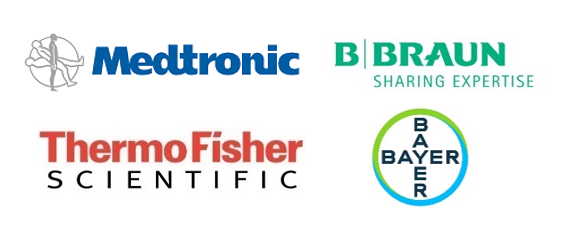Market Overview:
"The global MRI systems market was valued at US$ 5.3 billion in 2024 and is expected to register a CAGR of 5.4% over the forecast period and reach US$ 8.5 Billion in 2033."
|
Report Attributes |
Details |
|
Base Year |
2024 |
|
Forecast Years |
2025-2033 |
|
Historical Years |
2021-2023 |
|
MRI Systems Market Growth Rate (2025-2033) |
5.4% |
MRI (Magnetic Resonance Imaging) systems are advanced medical instruments employed to produce detailed internal body images. These systems operate by utilizing a strong magnetic field, radio waves, and computer technology to generate cross-sectional views of organs, tissues, bones, and other bodily structures. Notably, MRI is a non-invasive procedure that does not expose patients to ionizing radiation, rendering it a safe and effective diagnostic tool for a variety of conditions, including brain and spinal cord injuries, tumors, and joint issues.
The MRI Systems market is experiencing consistent growth, fueled by advancements in technology, a rise in chronic diseases, and the demand for non-invasive diagnostic tools. There is a notable increase in research and development efforts, leading to the introduction of more sophisticated MRI systems. Moreover, the market is benefiting from higher healthcare spending and an aging population, particularly in North America and Europe, where advanced medical technologies are quickly adopted.
MRI Systems Market Trends and Drivers:
Several key trends and drivers are shaping the MRI Systems market. These include advancements in technology, such as high-field MRI systems and the integration of artificial intelligence, which improve imaging capabilities and diagnostic accuracy. The market is also being driven by the growing prevalence of chronic diseases like cancer and neurological disorders, increasing the demand for MRI systems for early detection and monitoring. Additionally, the market is seeing a shift towards outpatient imaging services and greater adoption of MRI-guided procedures. However, challenges such as the high cost of MRI systems and the availability of alternative diagnostic methods could impede market growth.
The MRI systems market growth is influenced by several factors such as high-field MRI systems and the integration of artificial intelligence, are improving imaging capabilities and driving market expansion. An increase in chronic diseases like cancer and neurological disorders is boosting demand for MRI systems for early detection and monitoring. Additionally, the trend towards outpatient imaging services and the rising adoption of MRI-guided procedures are further stimulating market growth. Nevertheless, challenges such as the high costs of MRI systems and the availability of alternative diagnostic methods could limit market expansion.
MRI Systems Market Restraints:
The MRI Systems market faces several restraining factors. High upfront costs for equipment and maintenance are a significant barrier to entry and adoption, particularly in developing regions. Challenges with reimbursement and limited access to MRI services in certain areas further impede market growth. Additionally, competition from alternative diagnostic imaging modalities, such as CT scans and ultrasound, which may be more cost-effective in some instances, adds to the challenges. Compliance with strict regulatory requirements and addressing safety concerns associated with MRI technology also influence market dynamics.
MRI Systems Market Opportunities:
Opportunities abound in the MRI Systems market for growth and advancement. Technological progress, like integrating artificial intelligence and machine learning, could greatly improve imaging and diagnostics, leading to market expansion. With chronic diseases such as cancer and neurological disorders on the rise, the need for MRI systems for early detection and monitoring is growing. Additionally, the increasing use of MRI-guided procedures and the expansion of outpatient imaging services offer further avenues for market growth. Untapped markets in emerging economies also present significant opportunities for market players to broaden their reach and increase market share.
MRI Systems Market Segmentation:
By MRI Strength
- High-field MRI systems
- 1.5T MRI systems
- 3T MRI systems
- Very-high-field MRI systems (4T and above)
In the domain of MRI systems, 1.5T and 3T machines are the most prevalent due to their balance of imaging quality, cost-effectiveness, and widespread availability. These systems are commonly found in hospitals and imaging centers, offering high-resolution images suitable for diagnosing a wide range of conditions. While very-high-field MRI systems (4T and above) offer superior image quality and potential for advanced research applications, their adoption is limited by higher costs, technical complexities, and the need for specialized expertise. Consequently, 1.5T and 3T MRI systems continue to dominate the market, serving as the primary machines for routine clinical imaging.
By Components
- Gradient coils
- Superconducting coils
- Radiofrequency (RF) coils
- Transmit and receive coils
- Receive only coils
- Transmit only coils
In the realm of MRI components, radiofrequency (RF) coils play a dominant role. These coils are crucial for both transmitting RF pulses into the body to stimulate the nuclei for imaging and receiving the resulting signals to create the image. RF coils are versatile and can be designed in various configurations, such as combined transmit and receive, receive-only, or transmit-only coils, each offering specific advantages for different imaging scenarios. While gradient coils are essential for spatial encoding and image quality, and superconducting coils provide the magnetic field, it is the RF coils that are most critical for actual signal generation and reception, making them indispensable in MRI systems.
By Architecture Outlook
- Closed MRI systems
- Standard bore MRI
- Wide bore MRI
- Open MRI systems
In the landscape of MRI system architecture, closed MRI systems currently hold the dominant position. These systems excel in producing high-quality images owing to their strong magnetic field and advanced technology. Among closed MRI systems, standard bore machines are the most prevalent, offering a blend of image quality and patient comfort. Wide bore MRI systems are increasingly popular due to their larger openings, which can accommodate larger patients and alleviate feelings of claustrophobia. Open MRI systems, while providing the most space and accessibility, often compromise on image quality and are less commonly found in clinical settings. Despite the advantages of wide bore and open systems for certain patient groups, closed MRI systems remain the preferred choice for their overall imaging capabilities.
By End User
- Hospitals
- Imaging Centers
- Ambulatory Surgical Centers
- Others
Hospitals stand out as the dominant segment among MRI end users. This is primarily due to their extensive healthcare services catering to a wide array of medical conditions, leading to a greater need for MRI services. Moreover, hospitals typically possess the necessary resources and infrastructure to support MRI systems, including trained staff and maintenance capabilities. While imaging centers and ambulatory surgical centers also utilize MRI technology, hospitals remain at the forefront, fueling the demand for advanced MRI systems and services.
MRI Systems Market, By Region:
North America
- United States
- Canada
Europe
- Germany
- United Kingdom
- France
- Italy
- Spain
- Russia
- Poland
- Benelux
- Nordic
- Rest of Europe
Asia Pacific
- China
- Japan
- India
- South Korea
- ASEAN
- Australia New Zealand
- Rest of Asia Pacific
Latin America
- Brazil
- Mexico
- Argentina
Middle East Africa
- Saudi Arabia
- South Africa
- United Arab Emirates
- Israel
- Rest of MEA
Asia Pacific leads the MRI systems market, driven by several key factors. These include a growing population, increasing healthcare spending, and a rise in chronic illnesses, all of which fuel the demand for advanced medical imaging technologies. Additionally, improvements in healthcare infrastructure, greater awareness of early disease detection, and government efforts to upgrade healthcare facilities are accelerating the adoption of MRI systems in the region. The presence of major market players expanding their operations in Asia Pacific to meet the rising demand further cements the region's dominance in the MRI systems market.
Leading Companies in MRI Systems Market & Competitive Landscape:
The MRI systems market is fiercely competitive, with numerous key players striving for market dominance and actively pursuing strategic initiatives. These companies prioritize product innovation, technological advancements, and the expansion of their product portfolios to maintain a competitive advantage. They consistently invest in research and development to improve their product offerings and meet the changing needs of customers, focusing on factors such as efficiency, performance, and sustainability.
These companies include:
- GE Healthcare
- Canon Medical Systems
- Aspect Imaging
- FONAR
- Hitachi
- Siemens AG
- Toshiba Corporation
- Aurora Imaging Technologies, Inc.
- Koninklijke Philips N.V.
- Esaote SPA
- Sanrad Medical Systems Pvt ltd
- Fujifilm
- Neosoft Medical Systems
MRI Systems Recent News and Development
- In September 2022, the Inter-University Accelerator Centre (IUAC) in New Delhi launched one of India's first indigenous MRI machines. This system features a 1.5 Tesla superconducting MRI magnet and is capable of conducting full-body clinical scans.
- In July 2022, Canon Medical introduced the Vantage Fortian, a new MRI system that offers innovative workflow solutions, image enhancement, and accelerated scan technology. These features help reduce the time needed for MRI procedures. The system also includes a mobile interface for remote monitoring, seamless data integration, and in-room scan assist technology that automatically checks coils and corrects patient position.
MRI Systems Market Research Scope
|
Report Metric |
Report Details |
|
MRI Systems Market size available for the years |
2021-2033 |
|
Base Year |
2024 |
|
Forecast Period |
2025-2033 |
|
Compound Annual Growth Rate (CAGR) |
5.4% |
|
Segment covered |
By MRI strength, components, architecture outlook, end-user, and regions. |
|
Regions Covered |
North America: The U.S. Canada Latin America: Brazil, Mexico, Argentina, Rest of Latin America Asia Pacific: China, India, Japan, Australia New Zealand, ASEAN, Rest of Asia Pacific Europe: Germany, The U.K., France, Spain, Italy, Russia, Poland, BENELUX, NORDIC, Rest of Europe The Middle East Africa: Saudi Arabia, United Arab Emirates, South Africa, Egypt, Israel, and Rest of MEA |
|
Fastest Growing Country in Europe |
Germany |
|
Largest Market in Asia Pacific |
China |
|
Key Players |
GE Healthcare, Canon Medical Systems, Aspect Imaging, FONAR, Hitachi, Siemens AG, Toshiba Corporation, Aurora Imaging Technologies, Inc., Koninklijke Philips N.V., Esaote SPA, Sanrad Medical Systems Pvt ltd, Fujifilm and Neosoft Medical Systems. |
Frequently Asked Question
At what CAGR will the MRI systems market expand?
The market is anticipated to rise at 5.4% through 2033.
What are some key factors driving revenue growth of the MRI systems market?
Some key factors driving MRI systems market revenue growth include rising prevalence of chronic diseases, technological advancements, growing aging population, expanding application, and integration of artificial intelligence.
What are some major challenges faced by companies in the MRI systems market?
Companies face challenges such as high cost, data privacy and security, environmental impact, supply chain disruptions, and limited access in developing regions.
How is the competitive landscape in the MRI systems market?
The market is competitive, with key players focusing on technological advancements, product innovation, and strategic partnerships. Factors such as product quality, reliability, after-sales services, and customization capabilities play a significant role in determining competitiveness.
Who are the leading key players in MRI systems market?
The leading key players in the methylene blue market are GE Healthcare, Canon Medical Systems, Aspect Imaging, FONAR, Hitachi, Siemens AG, Toshiba Corporation, Aurora Imaging Technologies, Inc., Koninklijke Philips N.V., Esaote SPA, Sanrad Medical Systems Pvt ltd, Fujifilm and Neosoft Medical Systems.
How is MRI systems market segmented on the basis of end-user?
Based on end-user, the MRI systems market is segmented as hospitals, imaging centers, and ambulatory surgical centers.
How does an MRI system work?
An MRI system functions by aligning the hydrogen atoms within the body's tissues using a powerful magnetic field. Subsequent application of radio waves causes these atoms to emit signals, which are then utilized to create detailed images of the body's internal structures.
What are the main components of an MRI system?
The key components of an MRI system comprise the magnet for generating the magnetic field, the radiofrequency coils responsible for producing the radio waves used in imaging, and the computer system tasked with processing these signals to generate images.

